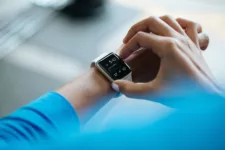With exploding chronic disease incidences and expanding geriatric population worldwide, the medical and healthcare domains are consistently on their toes. Technological innovation has come a long way in delivering better, improved healthcare over the years. Currently, advanced electronic wearable medical devices are proliferating at a rapid pace only to enhance patient outcomes at reduced overall costs.
It all started with hearing aids
While smart hearing aids, healthpatches, ovula rings, freestyle glucose monitoring systems, smart insulin pumps, continuous mobile glucose monitoring system, and pulse oximeters are some of the most popular devices based on wearable technology, the first significant and successful stride was marked by Aurex Corp. that brought to the market the world’s first wearable technology-based hearing aids in 1938.
Although the product had nothing glamorous like wireless connectivity or smartphone tracking ability, its introduction was enough to inspire a new wave of wearable technology within the medical and healthcare world. It certainly gave birth to numerous life-altering ideas in form of hundreds of wearable medical devices that are still transforming lives.
Hundreds are on market and several are ready to debut
From hearing aids and glucose monitoring devices, pain management systems to sleep technology devices, several wearable technology conceptions have been here to improve patients’ lives in some or the other way. Today, wearable medical devices represent a huge, multibillion dollar industry that serves a sizeable population with or without ailments.
However, swelling demand for real-time data tracking and continuous disease monitoring are among the most prominent reasons for which medical device wearables are usually looked up to. According to a recent study by Future Market Insights – a premium market research organization, the $ 22 Bn global market for wearable medical devices will observe stable growth over the next decade.
Medical device wearables primarily seem to target four key areas of human health, viz. hypertension, diabetes, cardiovascular disorders, and respiratory ailments. A study by Future Market Insights reports that wearable medical therapeutic devices, such as insulin pumps, respiratory devices, hearing aids, non-invasive ventilation, and sleep apnea devices will continue to experience substantial sales over the next decade, generating almost half of the total revenues of the global wearable medical devices market.
The market is awaiting emergence of several more advanced devices, including smart pills, smart contact lenses, cardiac monitoring devices, cardiac patches, therapeutic sleeves, sports bras for breast cancer screening, concussion management apps, and many more, which are currently in the middle of FDA’s approval process.
A glimpse of Medical IoT – Connected medical devices & connected patient modeling
Connected medical devices and patient modeling is likely to play a pivotal role in pushing the boundaries for both, medical device and wearable technology. Where the existing technology asks patients to physically visit a physician to get their respective health data reviewed, medical IoT – one of the most anticipated technologies, will enable instant and continual data transmission between patients and physicians through extended connectivity. Several players are trailing connected patient modeling via engineering simulation in a bid to create the real big impact on the healthcare model of the future. Supposedly, connected medical devices would grasp and interpret all the relevant parameters in order to securely provide the appropriate insights to physicians.
In a nutshell
With immense convenience, user-friendly operation, and effective functionality, wearable medical devices are no doubt experiencing soaring penetration within developed as well as developing markets. The potential of medical device wearables to shape up the future of medical technology cannot be thus overstated.
Market insights included in the article are sourced from Future Market Insight’s recently published report. Detailed excerpts of the report are available at http://www.futuremarketinsights.com/reports/sample/rep-gb-826
Author: Abhishek Budholiya is a tech blogger, digital marketing pro, and has contributed to numerous tech magazines. Currently, as a technology and digital branding consultant with Future Market Insights, he offers his analysis on the tech market research landscape. His forte is analysing the commercial viability of a new breakthrough, a trait you can see in his writing. When he is not ruminating about the tech world, he can be found playing table tennis or hanging out with his friends.








